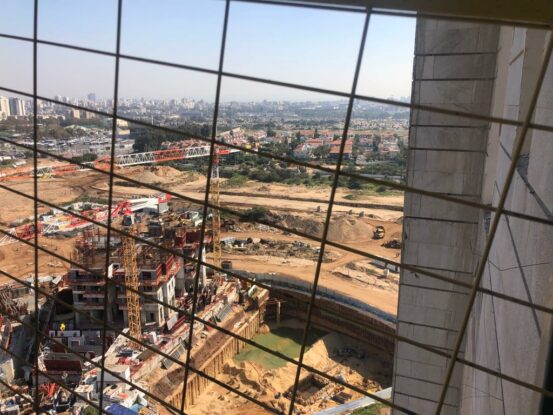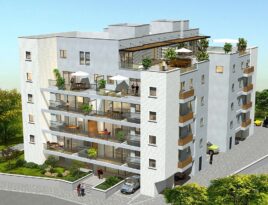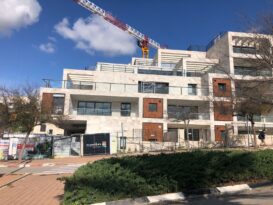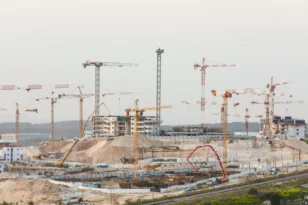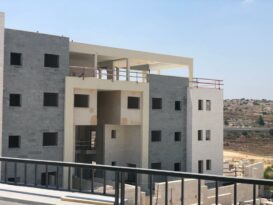Construction of 67,000 new apartments began in 2022 – an unprecedented figure in the Israeli market. Jerusalem saw a huge increase in the volume of new construction, with 4,500 starts, second only to Tel Aviv, by a small margin. Bat Yam and Beit Shemesh are among the cities with the most new construction in Israel. However, the year ended with a sharp decline in construction volumes.
Last week, the Central Bureau of Statistics (CBS) published a summary of new construction data for 2022, which included both good news and bad on the supply of homes in Israel.
On the optimistic side, 2022 was a record year for new construction, with just over 67,000 new apartments starting to be built during the year. If we take into account around 3,400 thousand apartments that were demolished this year as part of urban renewal proceedings, we reach a net figure of 63,600 new apartments on the market. Both net and gross figures are the highest recorded since CBS began publishing figures in an orderly manner about 20 years ago and are probably even the highest ever. This is the second consecutive year in which the figures for new construction are particularly high, and therefore there are now no less than 166,000 apartments under development – a figure that is also an all-time high.
However, as mentioned above, there is also a shortcoming in the market: This is reflected in a trend of decline in construction volumes. The first quarter of 2022 was the most fruitful, during which 19,600 homes began to be built, and from then on there was a decline in the data for each quarter being lower than the previous quarter, until the fourth quarter in which construction began on 14,700 homes, a figure that is 23 percent lower than the fourth quarter of 2021.
The slowdown, which only worsened throughout the year, can be attributed to both the sharp increase in interest rates that began last April and the crisis in the high-tech industry, a large part of the revenues from which fueled the apartment market, mainly in Tel Aviv and in the adjacent central cities. At the beginning of 2023, the air of uncertainty created by government initiatives regarding the judicial system was also added to these factors, and therefore it may be assumed, with a high level of certainty, that the data on new construction in the first quarter of 2023 will be even lower than those of the fourth quarter of 2022, and that the data for 2023 as a whole will be dramatically lower than those of 2022.
Huge construction in Jerusalem, Bat Yam, and Beit Shemesh
Another interesting statistic that emerges from the CBS data is that the proportion of new construction that is under urban renewal is also increasing. 11,300 new apartments were in new buildings that were constructed in place of old buildings that were demolished, so say about 8,000 apartments were added as part of demolition and reconstruction plans, and close to 5,000 more apartments were added to existing buildings. Overall, relative to 2021, there was an increase of 15.5 percent in the number of homes added to the market as a result of urban renewal.
An examination of the data by city shows that Tel Aviv began to build the largest number of apartments – 4,660 apartments in total, followed by Jerusalem with 4,460 apartments. However, while in Tel Aviv the volume of construction reflects a slight decline of 3.5% compared to last year’s figures, in Jerusalem there was a 41% jump in the volume of new construction.
In Bat Yam, the city adjacent to Tel Aviv to the south, construction of almost 3,200 new apartments, an unprecedented number of apartments relative to the size of the city began in 2022, representing twice as many as last year. In Beit Shemesh, 2,660 apartments began to be built, a figure that is also considered the highest relative to the city and represents an increase of 88% compared to last year.
Other significant centers of new construction were recorded in Rishon LeZion with 2,550 new apartments ( a decrease of 3%), Ashkelon with 2,450 new apartments (a drop of 40%), Netanya with about 2,400 apartments (a leap of 90%), Petah Tikva with about 2,100 (an increase of 53%) and Be’er Sheva with about 2,050 (an increase of 52%).
Lod and Kiryat Gat are on the map
Two cities stood out this year as hubs of significant new construction: The first is the city of Lod, which for many decades has suffered from social problems and was one of the focal points of the May 2021 riots. In 2022, new construction in the city jumped five-fold to 1,500 new apartments. In Kiryat Gat, located in the northern Negev, about 20 kilometers north of Be’er Sheva, 1,400 new apartments began to be built this year – three times as many as in 2021.
The bottom line is that the past two “fat years” significantly increased the level of supply in the housing market, which, combined with increased interest rates and a significant drop in demand, may lead to 2023 being a year of decline in home prices.
At the same time, the housing market is now regulating itself, and 2023 opened with a sharp decline in the volume of new construction. This situation, if continued over time, could eventually lead to a renewed shortage of supply, which in turn will push for price increases in 2024 and 2025.
Interested in special offers and discounted new projects across Israel? Whether you’re purchasing a vacation apartment or retirement residence, making a financial investment, or thinking about Aliyah, drop us a line, when you’re ready to talk. Whatever the reason, Buyitinisrael!
